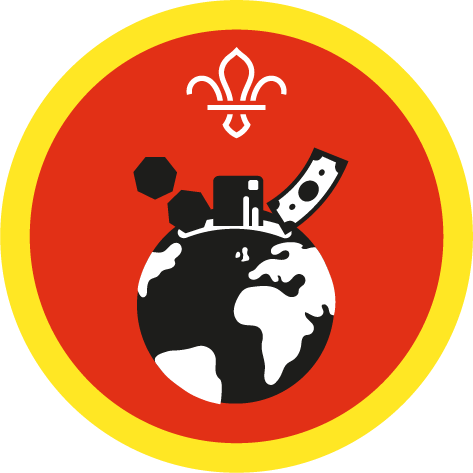
Money maps
You’ll need
- Device with access to the internet
- Chairs
- Tables
- A4 paper
- Sticky tape
- Coloured pens or pencils
- Scissors
Before you begin
- Use the safety checklist to help you plan and risk assess your activity. Additional help to carry out your risk assessment, including examples can be found here. Don’t forget to make sure all young people and adults involved in the activity know how to take part safely.
- Make sure you’ll have enough adult helpers. You may need some parents and carers to help if you’re short on helpers.
Setting up this activity
- Tape together a few sheets of A4 paper along the edges to create a large sheet. Draw a rough outline of a world map – a quick internet search will give you something to copy.
- Lay your world map on the floor, or tape it to a wall of your meeting space.
Step 1: Map it out
- Everyone should split into six even groups. Each group should choose a continent (from Asia, Africa, Europe, North America, South America, and Oceania).
- The person leading the game should explain that different countries have different money, with different names and different designs. The different moneys are called currencies.
Step 2: Country currencies
- Each group should choose one country from their continent and find out what currency they use. They should look at what it’s called, what it looks like, and what different denominations there are. This might depend on how many notes or coins of different amounts there are.
- The person leading the game should explain that people can convert money from one currency to another. This means they can swap some of their money for another country’s currency – they use their money to buy money they can use in another country.
- The person leading the game should explain that the amount of money you can buy is set by the exchange rate. 1 pound might be able to buy 1.3 US dollars, for example – but this doesn’t mean you are getting more money as things might cost a higher number of US dollars than pounds.
Step 3: Exchange
- Each group should use an online currency converter to find out how much of their country’s money they could buy with £10.
- Everyone should use what they have found out about their country’s money to draw how much of it they could buy with £10. Groups can choose whatever denominations they like to make up the amount; they should try to copy the coins and notes as clearly as possible.
- Once everyone’s drawn their money, they should cut it out and stick it on the giant world map where their country is.
- One by one, groups should tell everyone what country they chose, what the money is called, a bit about what it looks like and how much of it they could buy with £10.
Reflection
Most people don’t exchange money every day, so why is it useful to learn about how it works?
People may think about how it’s important to know when they do need to exchange money, how it affects buying some things online, or how currency conversion can affect the price of everyday items.
It can be quite a confusing process, but breaking it down can help everyone to understand. Did people know much about converting money before?
Money is often used to show important people, places, or events from a country’s history. What did people spot on their chosen country’s money?
Were there any people or places that they had heard of before? Were there any similarities to the things people see on money in the UK?
Safety
All activities must be safely managed. You must complete a thorough risk assessment and take appropriate steps to reduce risk. Use the safety checklist to help you plan and risk assess your activity. Always get approval for the activity, and have suitable supervision and an InTouch process.
- Scissors
Supervise young people appropriately when they’re using scissors. Store all sharp objects securely, out of the reach of young people.
Groups could choose multiple countries to learn about and change money into or create a simple holiday budget and find out how much money they would need to convert to pay for everything in a foreign currency.
Consider using a simplified exchange rate like 1:2 or 1:10 to make the conversions simpler. You could also choose any amount of foreign money to draw after finding out about foreign currencies.
This activity isn’t about mental maths – people can work together and use a calculator or currency convertor to figure out the numeracy bits.
All Scout activities should be inclusive and accessible.
To learn more about different money and designing your own, try Scout pound.
Take a look at more money skills activities.
Groups should be encouraged to select their own continents and countries. They might have been to or learned about some other countries and have some expert knowledge to bring to this activity.
